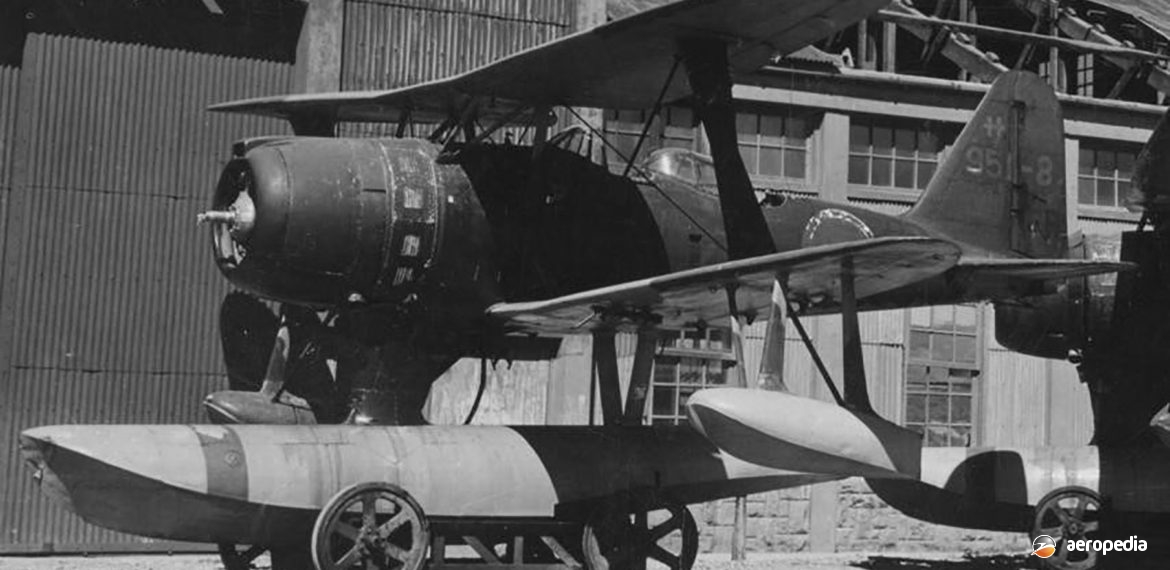Photograph:
A Mitsubishi F1M ‘Pete’ ca 1944 (Author’s collection)
Country of origin:
Japan
Description:
Air-observation floatplane and seaplane trainer
Power Plant:
One 653 kw (875 hp) Mitsubishi Zuisei MK2 13 fourteen-cylinder two-row air-cooled radial engine
Specifications:
- Wingspan: 11.0 m (36 ft 1⅛ in)
- Length: 9.5 m (31 ft 2 in)
- Height: 4.0 m (13 ft 1½ in)
- Wing area: 29.54 m² (317.965 sq ft)
- Max speed at 3,440 m (11,285 ft): 370 km/ h (230 mph)
- Climb to 5,000 m (16,404 ft): 9 mins 36 sec
- Service ceiling: 9,440 m (30,970 ft)
- Range: 740 km (460 miles)
- Empty weight: 1,928 kg (4,251 lb)
- Loaded weight: 2,550 kg (4,622 lb)
Armament:
Two fixed forward firing 7.7 mm (0.303 in) Type 97 machine guns; one flexible rear firing 7.7 mm (0.303 in) Type 92 machine gun; provision for two 60 kg (132 lb) bombs
History:
In the 1930s, as part of its interest in the Pacific region, Japan saw the need for floatplanes to operate from sheltered waters of the south Pacific islands in its future campaigns. Known as ‘Pete’ to the allies, the Mitsubishi F1M floatplane was designed in answer to a requirement issued in 1934 to build an observation floatplane for use by the Japanese Navy to replace the Nakajima G8N1 and operate off catapults on battleships and cruisers. The first of four prototypes, powered by a 612 kw (820 hp) Nakajima Hikari 1 radial engine, was first flown in June 1936. The aircraft was of biplane configuration with a central float under the fuselage and two outboard stabilising floats.
It was during trials at Nagoya that it was found to have directional instability. It was unstable on the water, leading to a re-design program which included a re-design of the wing, an increase in the area of the vertical fin and rudder, and enlargement of the central and stabilising floats to improve buoyancy. With these changes, and the installation of the Zuisei engine, it was flown off in a competition with a design from Aichi (the AB13) and was chosen for production in preference to the Aichi design. It entered production as the F1M2 (or Navy Type O Observation Seaplane Model 11) with the Mitsubishi Zuisei 13 engine.
The F1M Zero-kan was of all metal construction, the fuselage being of welded steel tube section and monocoque rear section. Some 524 examples were built by Mitsubishi and in due course production commenced also at the Dai Nijuichi KK facility as Sasebo, where 180 examples were completed. The type saw much service in the Pacific from seaplane tenders, battleships, cruisers, and various shore bases throughout the Pacific, including the Philippines, New Guinea and the Solomon Islands. It was used on occasion as a fighter and dive-bomber in support of amphibious operations. It operated from seaplane tenders of the 11th Air Division and, following the occupation of the Aleutian Islands in March 1942, a fighter unit was formed for local defence with F1M2s.
In the advanced training role it was known as the F1M2-K. A total of 1,118 F1Ms of all models was built. The wreck of an F1M ‘Pete’ remains where it sank at its moorings at Stirling Island on the southern tip of Bougainville Island, PNG. Stirling Island was a major Japanese floatplane base and was regularly attacked by low flying North American B-25 Mitchells and fighters based at Henderson Field on Guadalcanal. A number of wrecks have been located at Nila and at Shortland Harbour in the Shortland Islands, part of the Solomon Islands Group, and in Buka Passage, between Buka and Bougainville.
One was shot down on an island in the Louisade Archipelago, south-east of New Guinea, during the Battle of the Coral Sea and decayed during the years thereafter on a beach. However, some years ago an Australian group recovered two examples in restorable condition and these were stored for many years until one was placed on the market for sale for restoration

